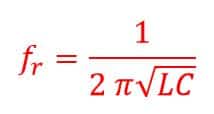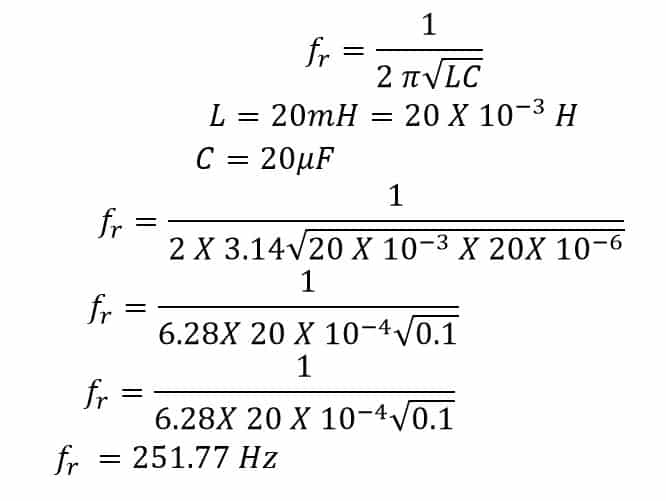What is a Tank Circuit?
LC tank circuit resonance calculator is a tool for calculating the resonant frequency of a tank circuit for a given capacitance and inductance values.
LC tank circuit is a parallel combination of a capacitor and inductor. It is the most common “resonant tank circuit”. The tank circuit absorbs maximum power at the resonant frequency. At the resonant frequency, the inductive reactance and capacitive reactance become equal.
Condition of tank circuit resonance is;
XL = XC
Where,
XL = Reactance of inductor
XC = Reactance of Capacitor

Formula of Tank Circuit Resonance Frequency

Where:
fr= Resonant frequency (Hz)
L = Circuit inductance (H)
C = Circuit capacitance (F)
LC Tank Circuit Resonance Frequency Calculator
Solved Problem on Resonance Frequency
Calculate the resonant frequency of a tank circuit if the value of capacitance and inductance are 20 Farad and 20 millihenries.

Applications
The resonance of tank circuits is beneficial in electrical engineering. This has great importance in radio technology. For example, the radio transmitter and receiver can not function without tank circuits.
The radio transmitter has a class C amplifier with a tank circuit at its load side. The feature of this type of amplifier is that it generates enormous energy when the signal coupled from the amplifier to the antenna. Thus, the signal has good strength during wave propagation in the space.
Similarly, a radio receiver has a tank circuit. The tank circuit has its tuning frequency equal to the transmitting signal frequency. Thus, the tank circuit recovers the signal from the modulated waveform.
Read Next: